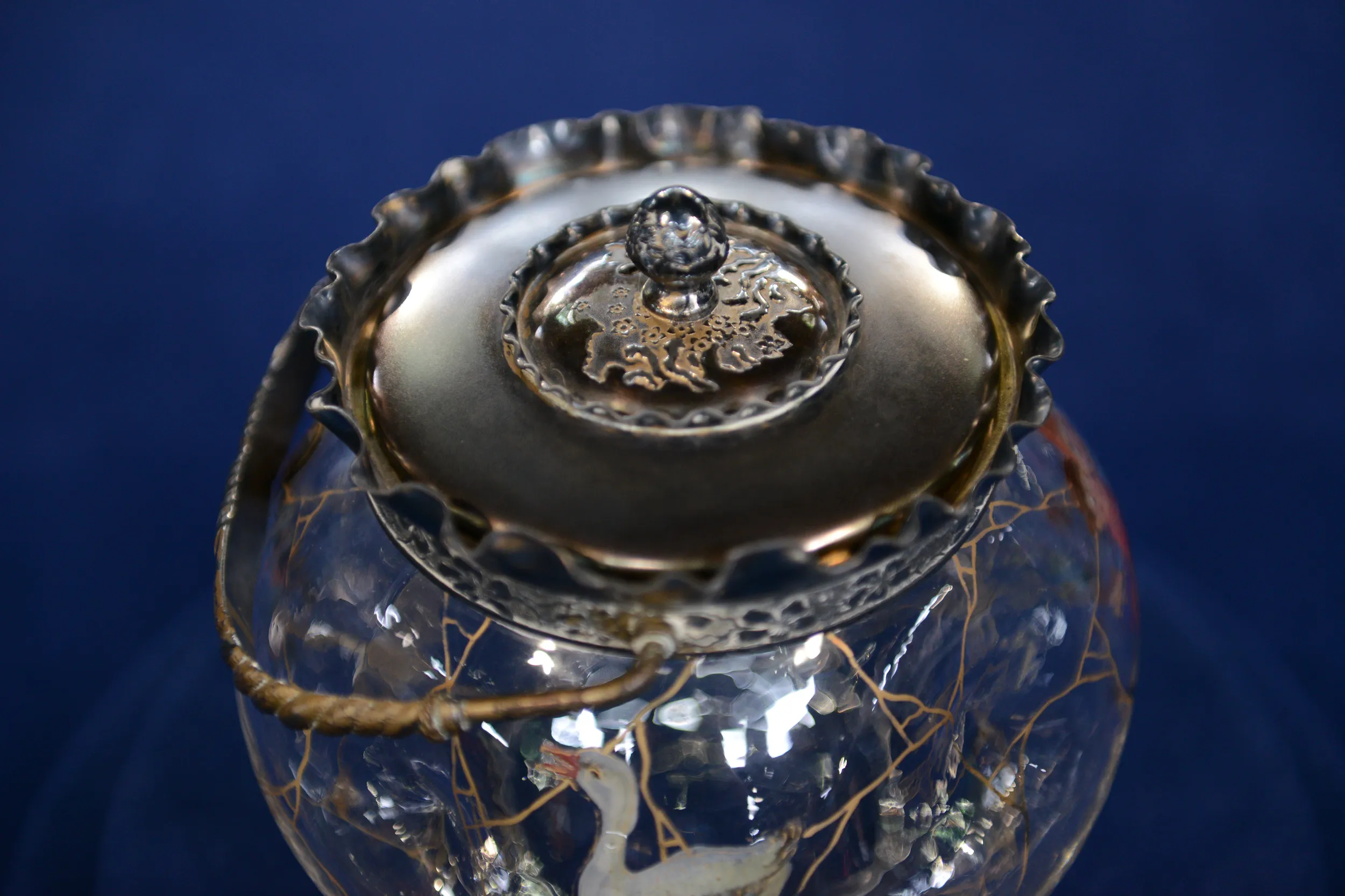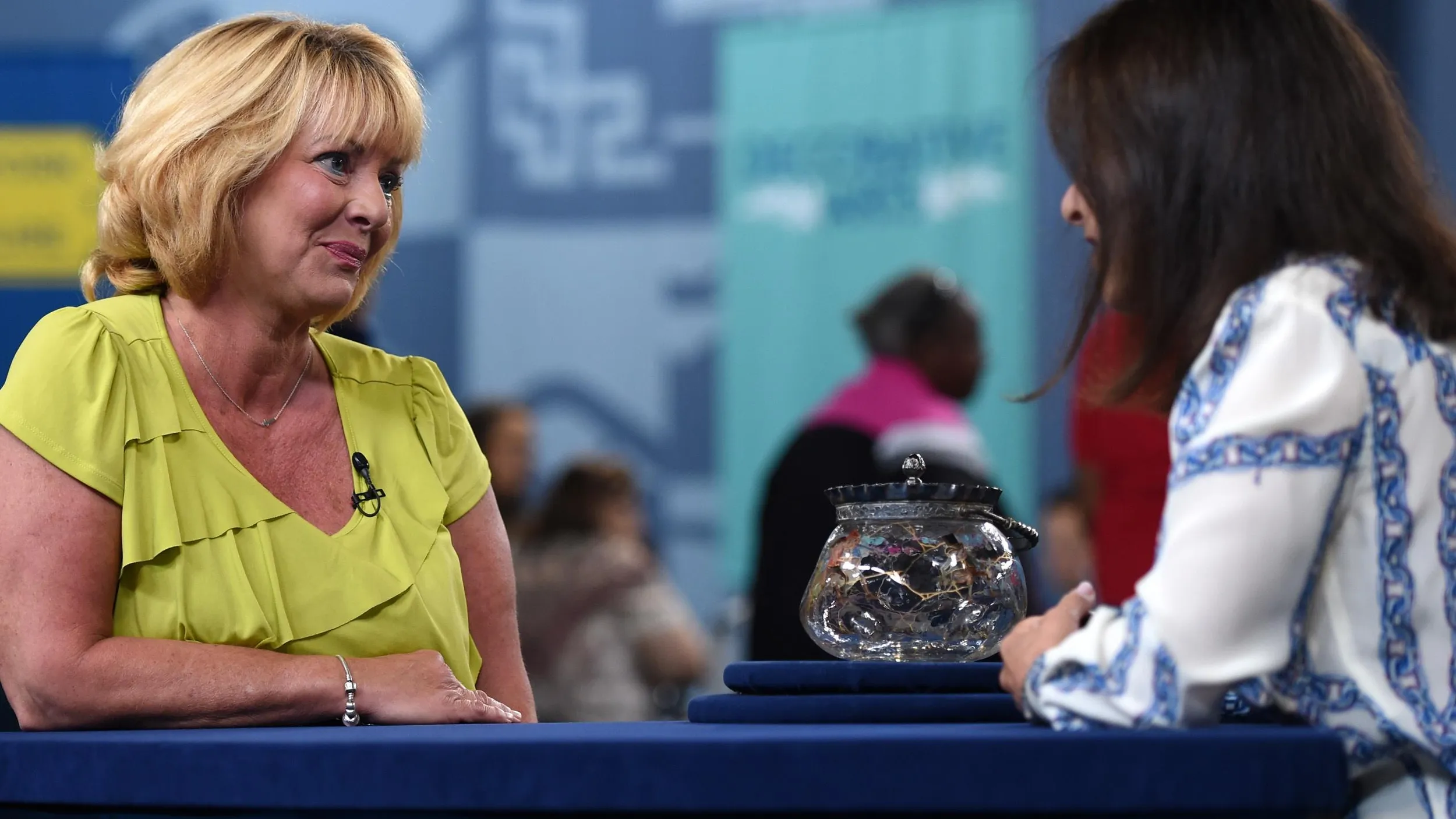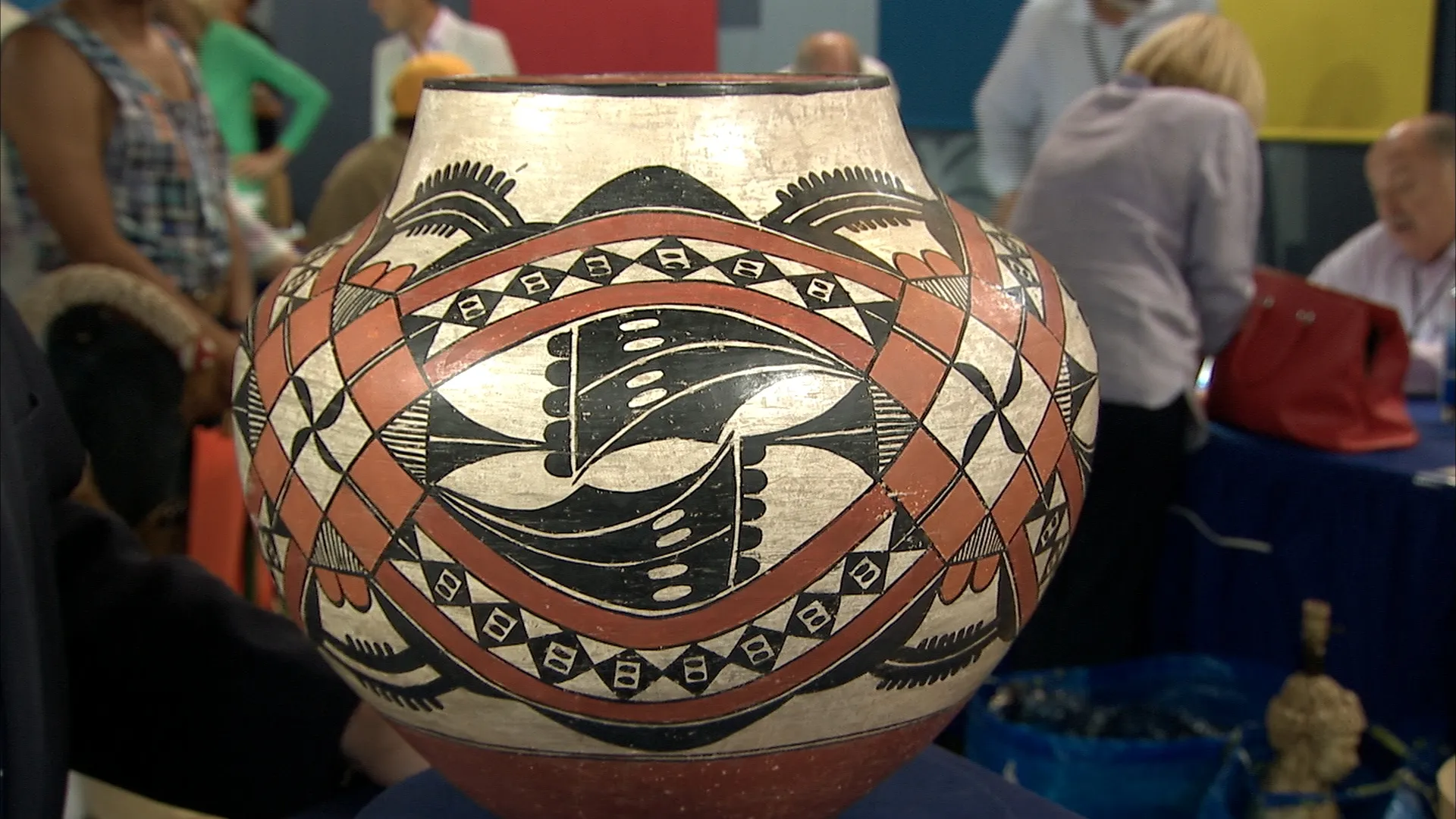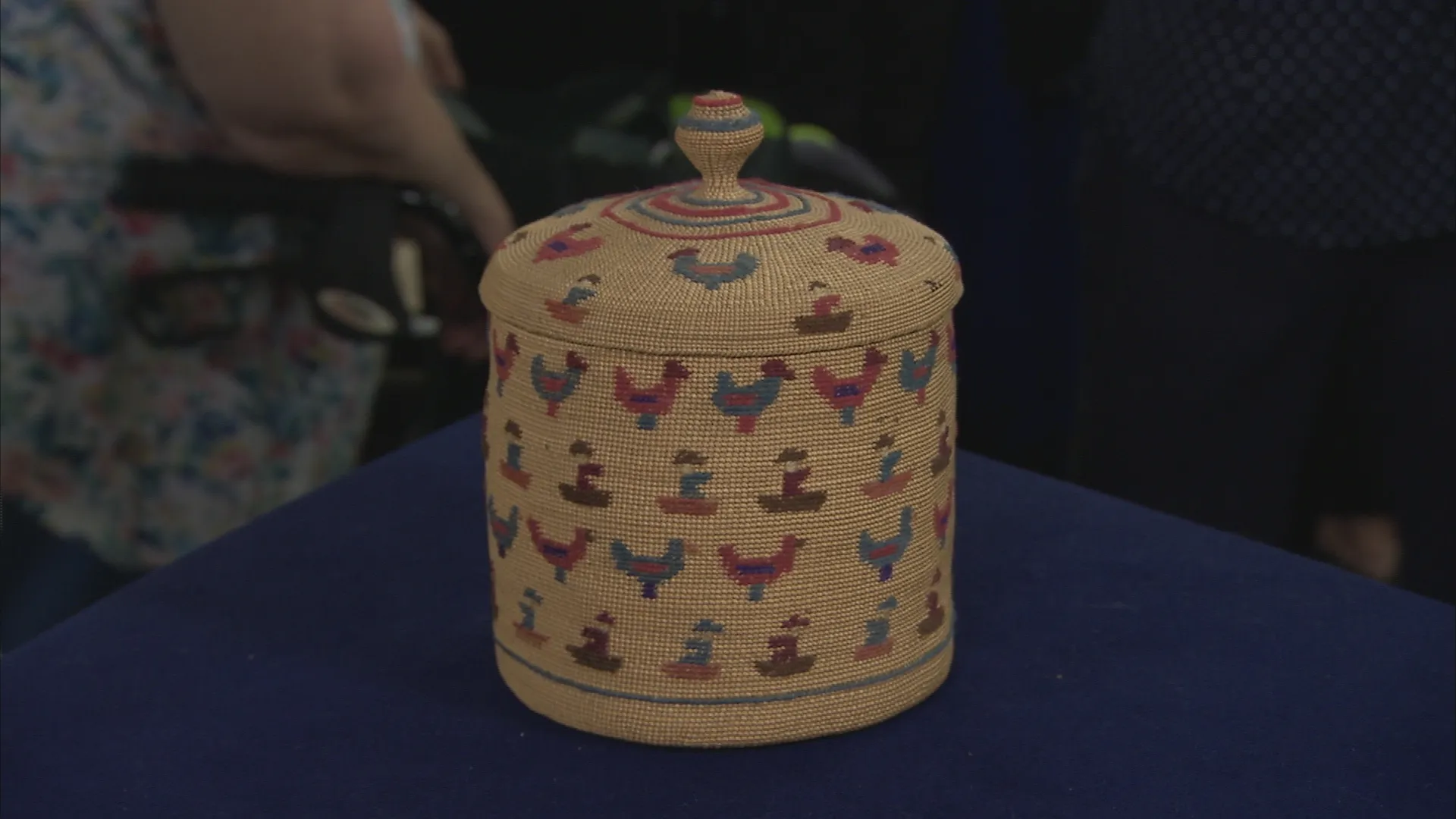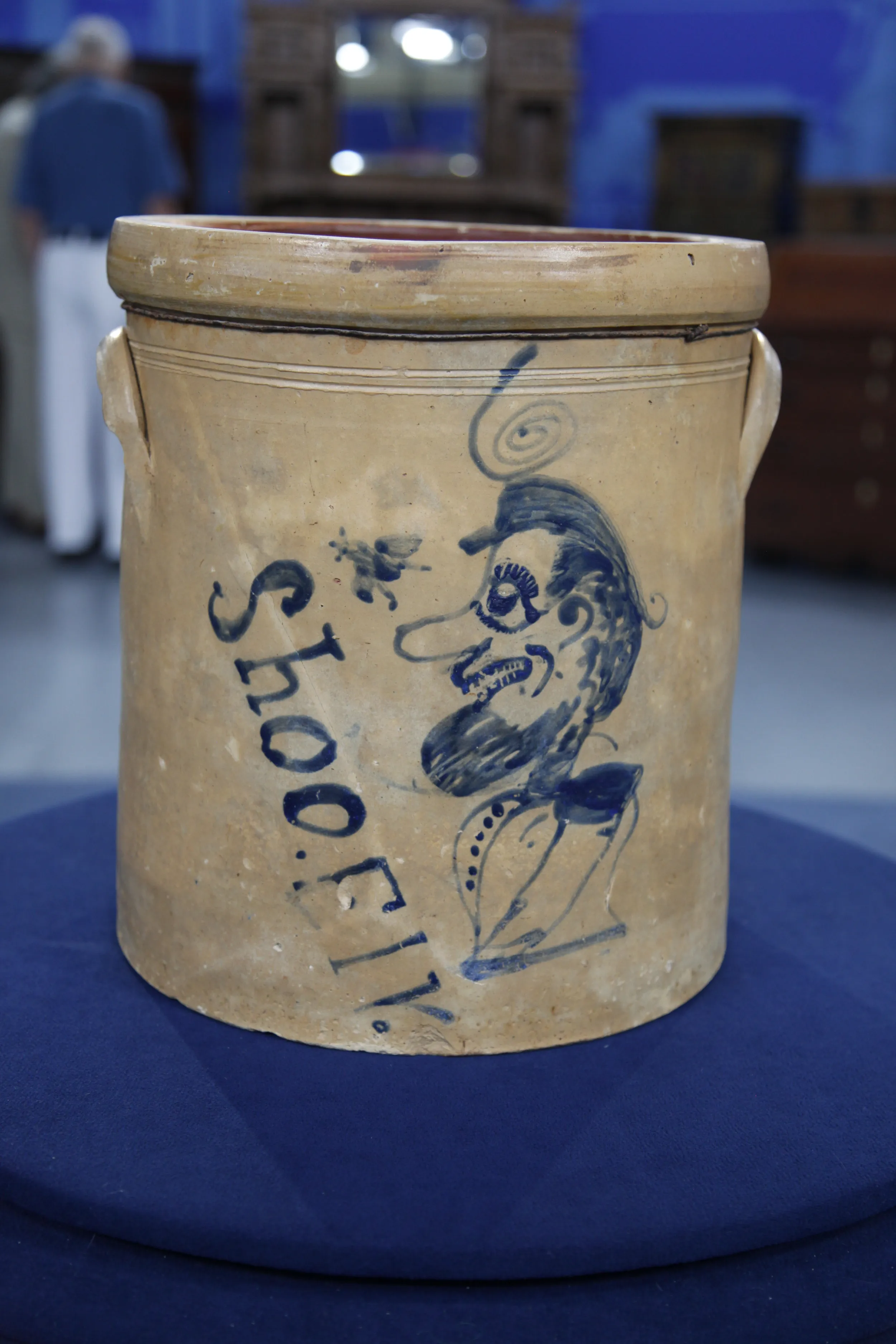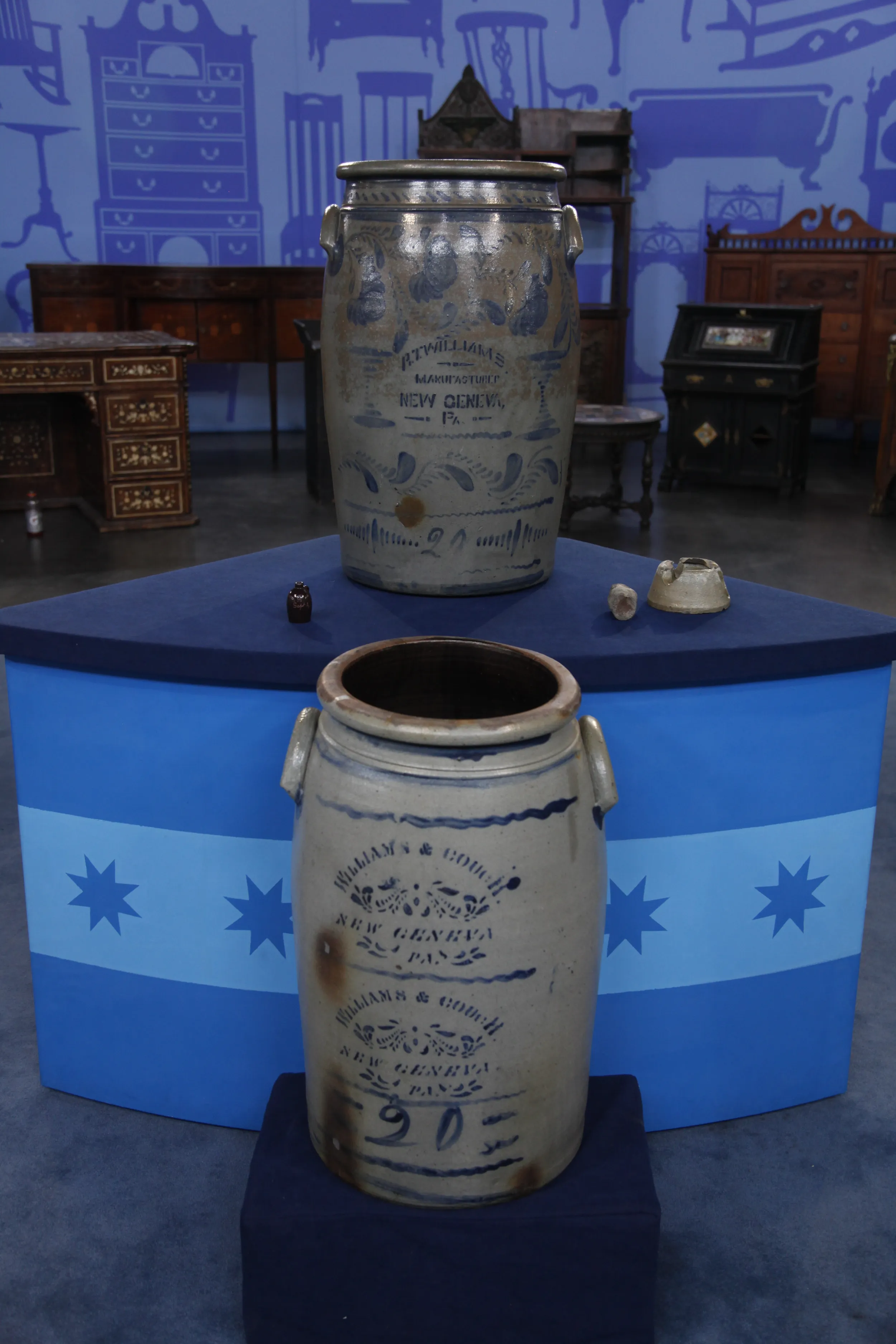GUEST: This was given to me by a dear friend and neighbor of mine some years ago. I don't really know a lot about it. It looks almost English to me, but I noticed there's a mark on the bottom that says "Napoli," and that sounds Italian.
APPRAISER: It does say "Napoli" on the bottom, and then there's a number underneath it. This was made by a company called Mt. Washington.
GUEST: Okay.
APPRAISER: And they made all different types of glass, Crown Milano and Royal Flemish. But this particular glass was called Napoli.
GUEST: Okay.
APPRAISER: And it was interesting when I saw it, because I was a little confused, too. But then I lifted the cover, and inside, there's an "MW" in there, which stands for Mt. Washington. They first opened in 1837 in South Boston, Massachusetts, and in 1870, they moved to New Bedford, Massachusetts. So this piece was clearly made in New Bedford. They actually merged with Pairpoint Glass in 1894, and Pairpoint would make some of the metalwork. So this was an opportune moment for them to make a biscuit jar like this one. Now, Napoli glass was made for a very short period of time, between 1894, when it was patented, and 1896.
GUEST: Oh, my word.
APPRAISER: And it was created by Albert Steffin, who was the head of Mt. Washington. Now, the little fanciful figures that you see, which I just think are so adorable, are based on Palmer Cox's Brownie figures. Palmer Cox was a Canadian illustrator and author who wrote the Brownies series, and he illustrated... In many of the books, you have these little figures of what he called Brownies.
GUEST: Interesting.
APPRAISER: In fact, it was so popular that one of the first hand-held cameras made by Eastman Kodak was called the Brownie camera, and it was named after the Brownies of Palmer Cox.
GUEST: Oh, how interesting.
APPRAISER: This almost looks like Jiminy Cricket, but we know that's not.
GUEST: Right.
APPRAISER: And over here, looks like a Keystone Kop.
GUEST: That's right.
APPRAISER: And over here, I thought this was a goose, but some people might say that it's a duck.
GUEST: Oh, okay.
APPRAISER: But it's really just terrific.
GUEST: Right.
APPRAISER: And then these two figures here, which are so lovely. What's so interesting is, you see the painted figures on the outside, but those are painted on the interior.
GUEST: Oh, my goodness.
APPRAISER: It's not on the surface, so you can only imagine how difficult it must have been. And then you have this beautiful gilt webbing, which is typical, and there are some pinched areas. It has a nice handle with a tied twig design. It's all-in-all in really remarkably good condition. The metal has tarnished somewhat, but actually, if you saw the interior, that's probably what it looked like when it was brand-new.
GUEST: Ah, so it's gold-plated?
APPRAISER: There is a trace of gold plating on it, very, very little, but, yes, it was originally gold-plated. In terms of value, something like this at auction could easily bring between $4,000 and $6,000.
(gasps)
GUEST: Oh, my word. I had no idea. That's great. Thank you.

